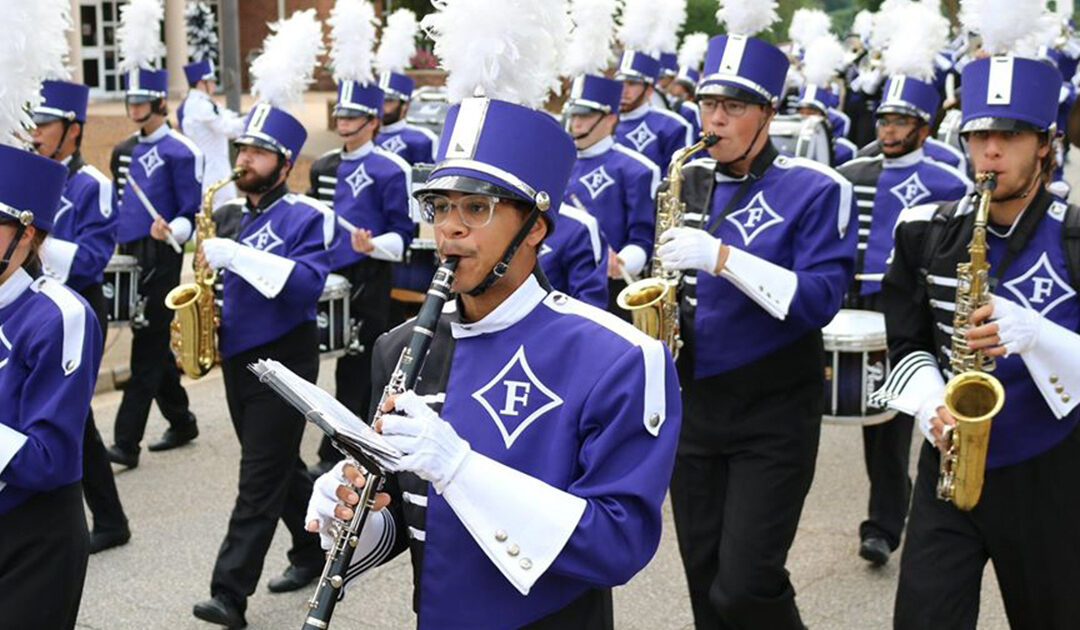Marching in parades is quite different from the typical competition, which means different steps to prepare.
While you don’t have to worry about nearly as much choreography, a parade has its own concerns—they’re long, in unfamiliar territory, in front of a large audience (possibly televised), and the grid formation makes inconsistency easy to spot. Even if the parade isn’t being judged for a score, you still want to look and sound your best for the captive audience.
So, here are a few of our top tips for preparing to march in a parade with your student band.
Logistics
- Transportation Strategies: Whether you’re using a motorcoach or flying to your destination, chances are you’ll need additional trucks for equipment. Consider shipping most of your equipment to a destination, as it can be more reliable, more convenient, and even cheaper than flying it all.
- Instrument Readiness: Conduct a thorough instrument check upon arrival and maintain a list of local music stores for quick access in case of repair or replacement needs.
Precision in Marching
- Uniformity is Key: Dedicate ample time to practicing marching to achieve uniformity across the entire band. Focus on consistent steps and instrument positioning to create a synchronized performance.
- Mind the Diagonals: Many bands think in terms of rows and columns, which is understandable, but in a parade, diagonals are actually the most visible part of the formation (whether it’s to the crowd or judges). Try dressing down the column first, then the longest diagonal, then the shortest. Doing this, your rows should fall nicely into place naturally.
- Member Placement: If you guide along diagonals, the center column becomes the most important spot in the block. Consider putting your most experienced marchers here, then the next-most skilled on the outside.
- Musical Precision: Practice, practice, practice, not only the marching, but also the music. Especially in televised parades, spot-on musical performances significantly enhance the overall impact of the band. However, for members still struggling with marching, you might want to have them focus entirely on movement and only play during crucial moments, or when they’re feeling confident.
- Proper Attire: Dress appropriately, paying particular attention to high-quality, blister-resistant shoes. Parade durations almost always surpass typical performances, so prioritize endurance and comfort in your ensemble’s wardrobe, and especially footwear.
- Watch Your Step: Band members should be looking out for each other. Warn others of potholes or other obstacles.
Physical Preparedness
- Endurance Building: Recognize that parades often last longer than standard performances. Structure rehearsals to build endurance, preparing the band for the physical demands of an extended performance.
- Hydration Matters: Emphasize the importance of staying hydrated, especially during warm and sunny parades. Hydration plays a crucial role in maintaining peak performance and energy levels.
Staying in Formation
- Guidelines for Line Formation: Implement three key guidelines to stay in line successfully:
- Designate a Center Guide responsible for spacing with the row in front.
- Always stay in line with the person next to you (to the inside of your rank).
- Always stay immediately behind the person’s neck in front of you.
- Know Your Route: Familiarize yourself with the parade route, especially the turns. At a turn or corner, follow Drum Major signals for precise pinwheeling. The inside of the line takes small steps, while the outside takes larger steps, maintaining a straight line throughout the turn. If the turns are all in one direction, consider organizing bandmates by height to make this transition easier and smoother.
By integrating these tips into your parade preparation, you’ll be well-equipped to deliver a seamless and unforgettable marching performance. So, march on with confidence, precision, and style!

